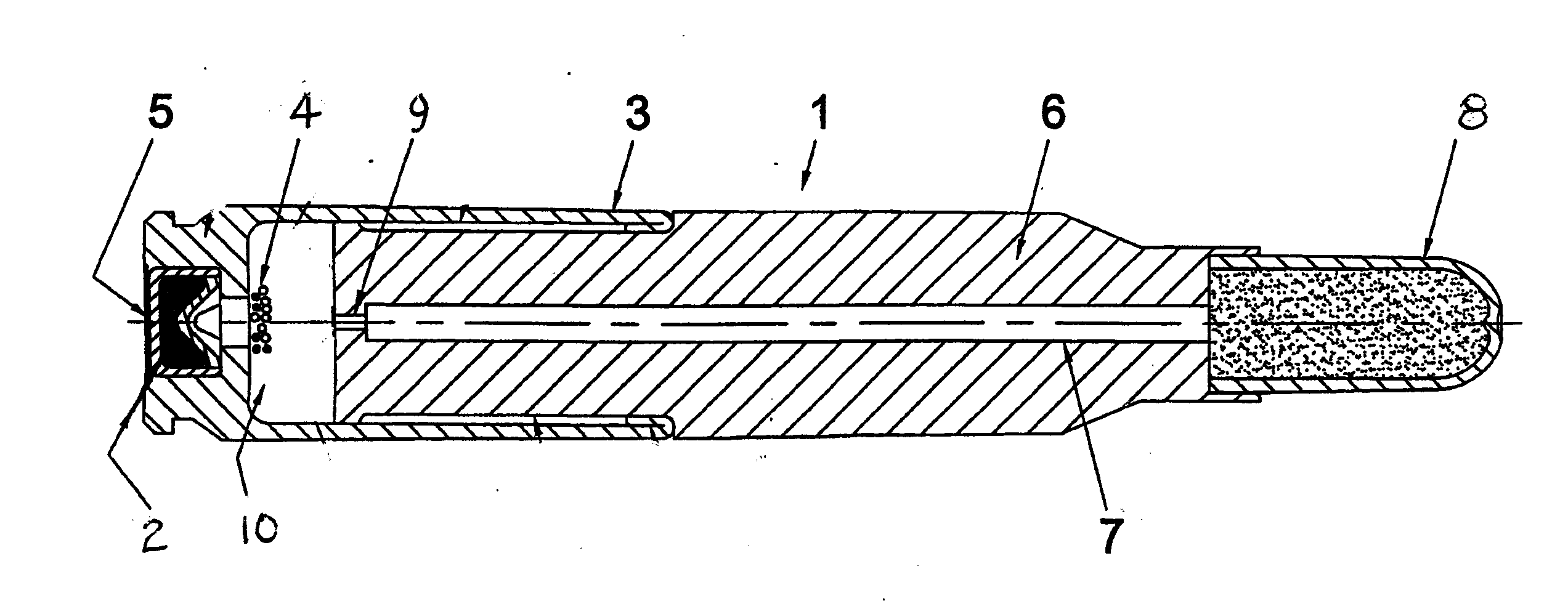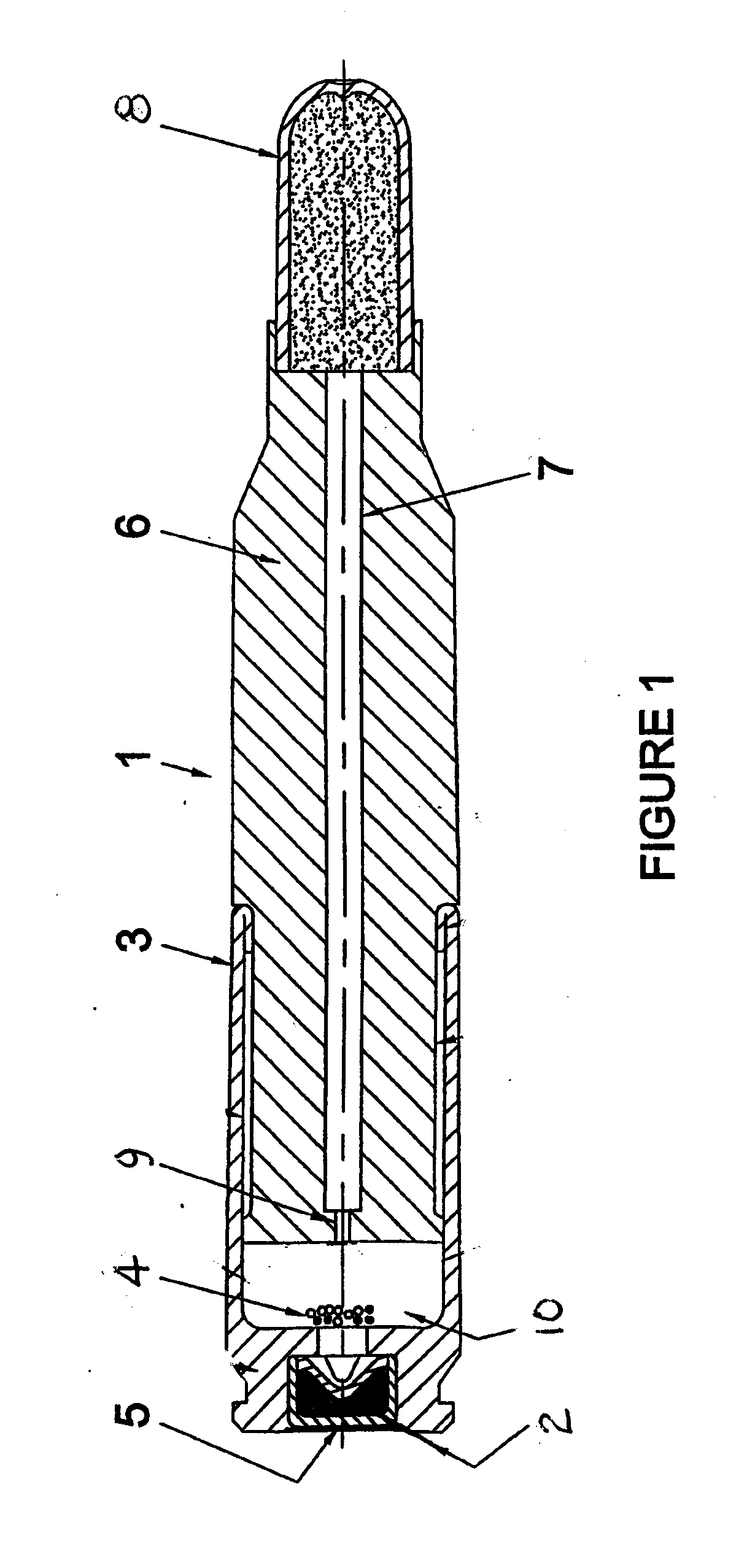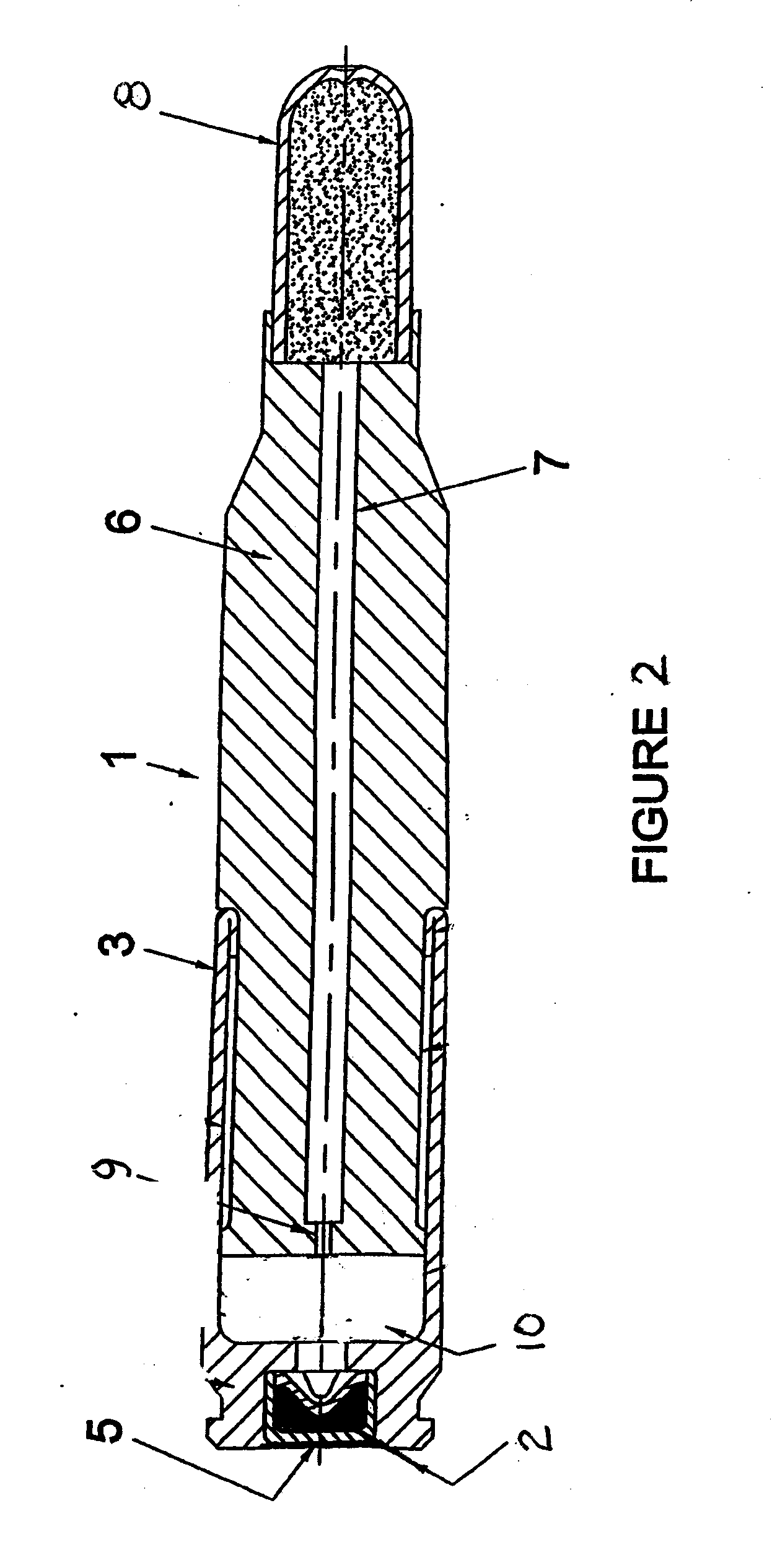Low toxicity primer compositions for reduced energy ammunition
a low-toxicity, ammunition technology, applied in the direction of nitroglycerine explosive compositions, weaving, looms, etc., can solve the problems of not being able to meet the requirements of rimfire applications, the primer composition suitable for centerfire cartridges may not perform adequately, and the ammunition produced in the world today contains toxic components. to achieve the effect of improving the sensitivity of the primer composition to percussion and increasing the sensitivity to percussion
- Summary
- Abstract
- Description
- Claims
- Application Information
AI Technical Summary
Benefits of technology
Problems solved by technology
Method used
Image
Examples
Embodiment Construction
[0043]References to “toxicity”, as used herein, are to be understood as a relative term. The consumption, use or exposure to large doses of the majority of compounds can, at some level, be determined to be toxic. The compounds of the present invention are said to have a reduced toxicity in comparison with compounds of the prior art which are currently used in primers. In this sense, the disclosed compounds produce a residue after firing that is substantially free of toxic substances. More particularly and preferably, such residues are free of the presence of mercury, lead, barium, antimony, beryllium, cadmium, arsenic, chromium, selenium, tin, and thallium.
[0044]Wherever ranges of values are referenced within this specification, sub-ranges therein are intended to be included within the scope of the invention unless otherwise indicated. Where characteristics are attributed to one or another variant of the invention, unless otherwise indicated, such characteristics are intended to app...
PUM
| Property | Measurement | Unit |
|---|---|---|
| mean size | aaaaa | aaaaa |
| mean size | aaaaa | aaaaa |
| mean size | aaaaa | aaaaa |
Abstract
Description
Claims
Application Information
 Login to View More
Login to View More - R&D
- Intellectual Property
- Life Sciences
- Materials
- Tech Scout
- Unparalleled Data Quality
- Higher Quality Content
- 60% Fewer Hallucinations
Browse by: Latest US Patents, China's latest patents, Technical Efficacy Thesaurus, Application Domain, Technology Topic, Popular Technical Reports.
© 2025 PatSnap. All rights reserved.Legal|Privacy policy|Modern Slavery Act Transparency Statement|Sitemap|About US| Contact US: help@patsnap.com



